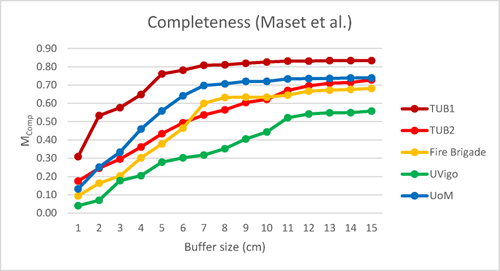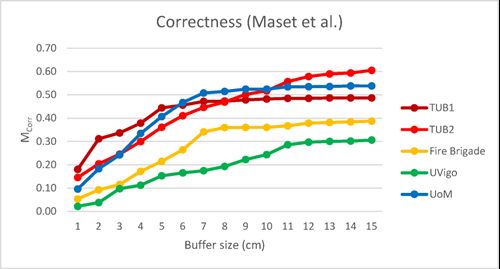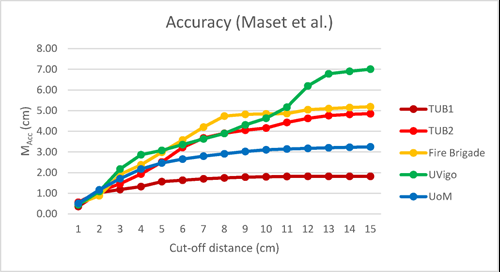Submission name:
Maset et al.
Short description of the method:
First the algorithm reduces the 3D point cloud to a set of sampled planar points, referred to as wall samples. For each wall sample a normal vector is locally estimated using Principal Component Analysis together with a confidence measure of the co-planarity of the corresponding points. Only normals with a confidence higher than a certain threshold are retained. The next step consists in organizing the wall samples into linear structures, exploiting the Min-hashed J-Linkage algorithm (see the reference paper) and taking into account also the normal vectors of wall samples. To further improve the detected set of lines, as a preliminary pruning, those lines that are supported by few wall samples are deemed as outliers, as well as the ones that do not conform to the so called Manhattan Word assumption. A room segmentation method is finally applied in order to reject spurious wall segments. The multiple regions in which the plane is partitioned by the collection of the detected lines are clustered and segments that separate distinct clustered regions are retained as dominant walls. Walls situated in the interior of a room are instead lifted to 3D as planar patches and, according to the cardinality of their supporting inliers, are either kept or discarded.
Reference:
Magri, L. and Fusiello, A., 2018, September. Reconstruction of interior walls from point cloud data with min-hashed J-linkage. In 2018 International Conference on 3D Vision (3DV) (pp. 131-139). IEEE.
URL:
Not provided.
Submission date:
28 Dec. 2018
Last update:
28 Dec. 2018


